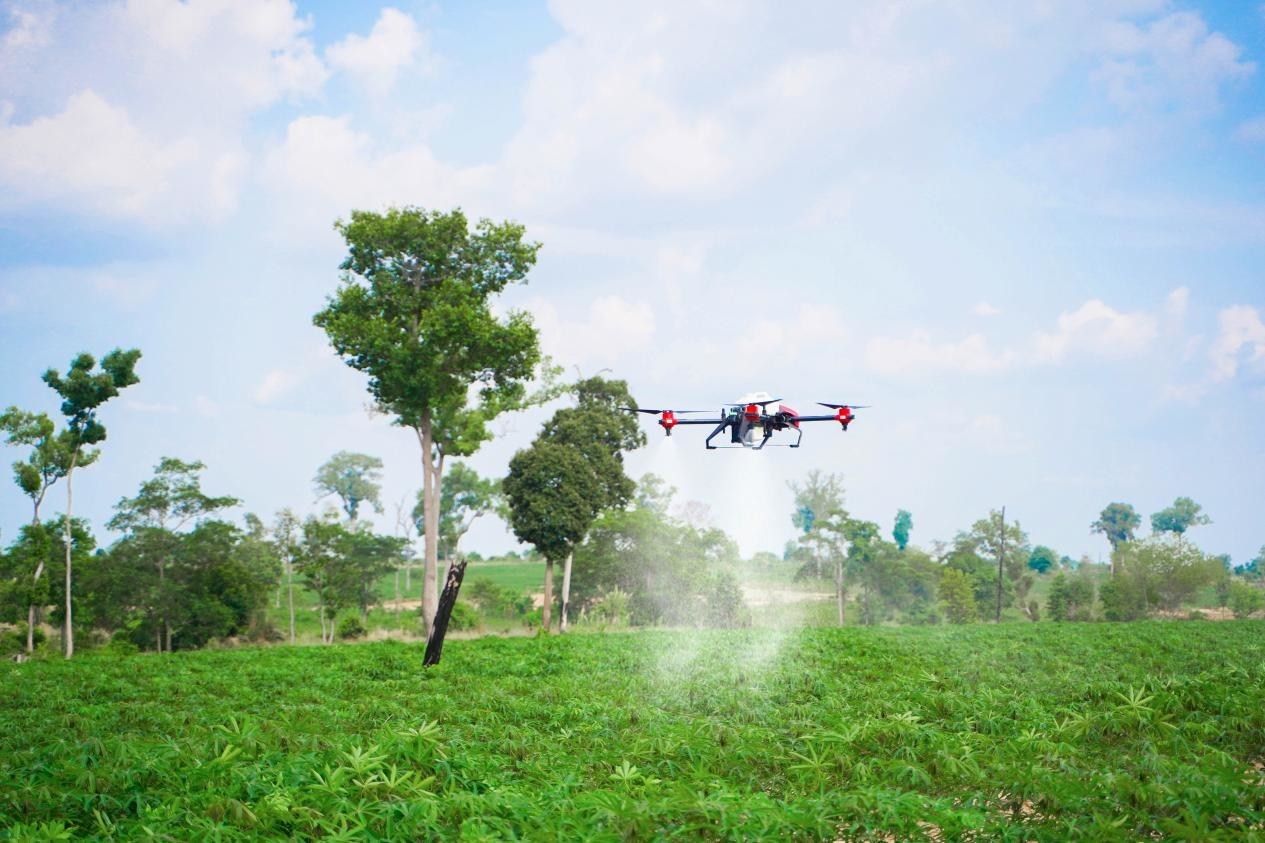
Broadly grown on 600,000 hectares of farmland in the country, cassava cultivation provides employment to thousands of rural workers in Cambodia. But cultivating a crop that can grow higher than one meter, and sometimes even surpass the average height of farmers, is not the easiest thing to do. So now, to meet the growing demand for cassava-based products such as food, flour, paper, and alcohol, farmers are looking at agricultural drones that bring with them the promise of increased productivity.
Chhay Thi, who owns 20 hectares of land in Varin District, Siem Reap Province of Cambodia, is an early adopter of spray drones. Last month, he used a XAG agricultural drone for autonomous weeding on his 10-hectare cassava field.
The drone flew over ridges of cassava plants, sprayed precisely along the pre-set route, and finished 8 hectares of herbicide spraying in an hour without any operator intervention. Chhay says the same amount of work would have more than a week to complete manually.
Also read: Sony Airpeak S1 drone firmware update adds direct repeat flight function
Now, the issue isn’t that the agriculture sector doesn’t have an adequate workforce. But when workers are hired for pesticide spraying, the cost to farm owners could be as high as $18-$25 per hectare. Moreover, a group of farm workers can tackle only one hectare per day, which is certainly not sufficient during the busy season of cassava growth.
Chhay Thi believes the increased efficiency of agricultural drones can help farmers like him reduce the overall planting costs. He says:
If I have a XAG drone in busy seasons to help me with crop protection, I can save $8-10 per hectare that is typically spent on manual spraying. Drone operation also reduces the use of chemicals by 10-30%, so the resources and money saved can be reallocated to the other crop cultivation.
And let’s not forget that using a drone helps to protect farmers from unnecessary chemical exposure. In addition, the way an agricultural drone sprays top down from the air prevents direct contact of large ground machinery on crops, thus avoiding damage while ensuring that pesticides or fertilizers penetrate the plants with precision.
In Chhay Thi’s hometown, many villagers cultivate cassava as their main source of income. “I believe the high efficiency and affordable price will accelerate the scale-up of drone operation among more farmers. XAG’s agricultural drone can not only help me reap more harvest, but also serve other farmers with the same demand for cassava boom,” the farmer sums up.
Read more: California man arrested for dropping illegal fireworks from drone
FTC: We use income earning auto affiliate links. More.



Comments